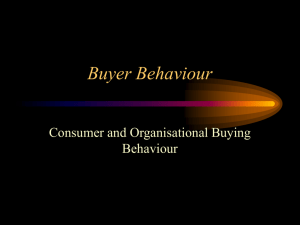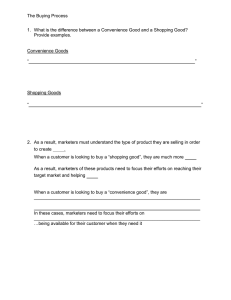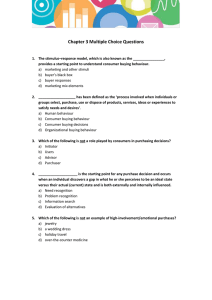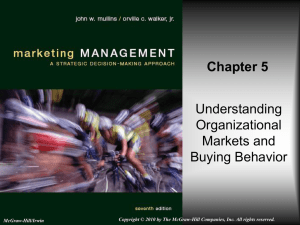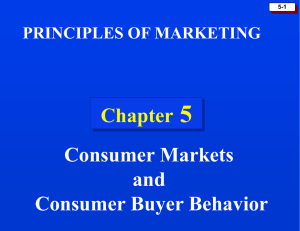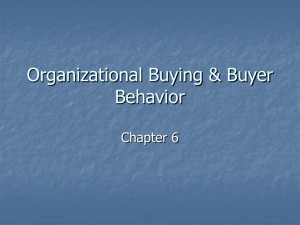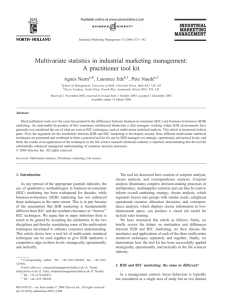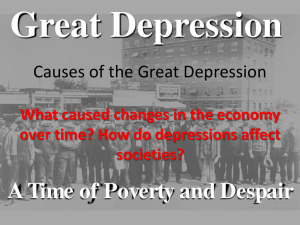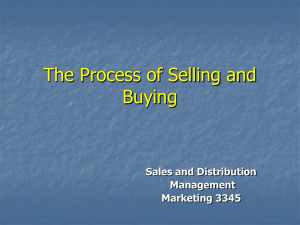Buyer behaviour
advertisement
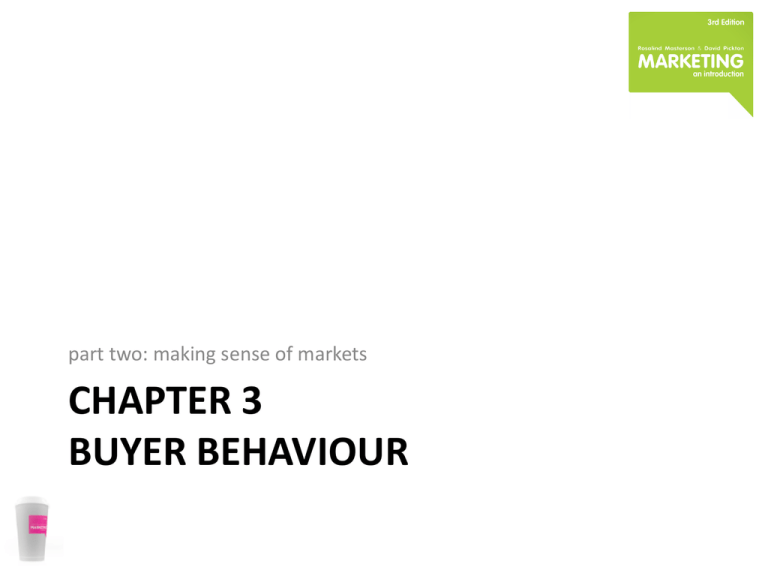
part two: making sense of markets CHAPTER 3 BUYER BEHAVIOUR an opening challenge The Apprentice is a BBC television programme in which young business people compete for a job with Lord Sugar. In one episode, the teams were asked to sell expensive lollipops at a zoo. One contestant’s approach was to hand a lollipop to a small child, ask if the child liked it/wanted it – and then charge the parents. What do you think of that idea? agenda • consumer decision making – process – organisational decisions • influences on buyer behaviour – internal – external • organisational decision making buyer decision process need or problem info search evaluation of alternatives purchase decision purchase post-purchase evaluation need or problem recognition AQ – re-set figure text information search • personal sources – e.g. family, friends • commercial (supplier) sources – e.g. websites, adverts, product literature • third-party sources – e.g. reviews, articles, blogs evaluating alternatives criteria: • performance • financial • social • personal purchase decision AQ – re-set figure type post-purchase evaluation • three likely outcomes: – disappointment – satisfaction – delight • post-purchase dissonance • marketing’s role continues post-purchase consumer buying situations • routine problem solving – regular purchases, low risk – e.g. drinks, sweets, bread • limited problem solving – less frequent purchases, greater risk – e.g. laptop, phone • extended problem solving – rarely purchased, high risk – e.g. flat, car levels of involvement • the level is affected by: – self-image – perceived risk – social factors – hedonism low level of involvement high minor need/problem recognition major limited information search extensive few considered evaluation of alternatives many considered rapid purchase decision slow may change at pos actual purchase planned limited post-purchase evaluation extensive buyer behaviour types high involvement low involvement complex variety-seeking high differences between brands low dissonancereducing habitual internal influences on buying behaviour • personality • perception • learning – behavioural – cognitive • motives • attitudes and beliefs external influences on buying behaviour • culture • reference groups – membership groups – aspirational groups – disassociative groups • social networking media • family • buying roles (decision-making unit) the decision to purchase a new product awareness interest evaluation trial adoption (Strong, 2007) product adoption AQ – re-set figure type and slightly increase size of innovators triangle increased complexity of organisational decisions • • • • • • • buy in larger quantities negotiate harder on delivery terms expect reduced prices for bulk buying may require tailored products are harder to please more people involved in making the decision longer, more complex procedures organisational buying situations AQ – re-set figure type the buying centre initiator user influencer purchase decision decider buyer gatekeeper financer the buying process • • • • • • • • problem recognition general need description product specification supplier search proposal solicitation supplier selection order performance review summary • individuals make buying decisions – not markets – not organisations • individuals vary – personality, motives, attitudes, beliefs, perception, culture – role in decision-making unit or buying centre – adopter category • buying decision processes vary – high or low involvement? – consumer or organisation? reference Strong, E.K. (2007) The Psychology of Selling. New York: McGraw-Hill.
